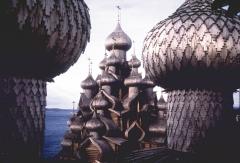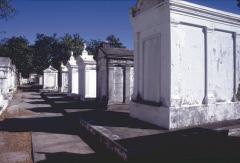Database Provides Monumental Information
Monuments around the world that have been damaged by war, neglect and pollution are the focus of restoration and preservation efforts through a database developed at the University of Florida.

|
| photo by: Johan Mattson |
Countries sent photographs, maps and information on monuments they wanted protected, and UF geoplanning graduate students spent three weeks scanning and digitizing the information into a database.
The information is now on an in-house database for the World Monument Fund, and will be used for raising funds for restoration. Plans are for the information to eventually be available to everyone via the World Wide Web.

|
| photo by: Elizabeth D. Calvit |
These monuments have been damaged in different ways. Some have been in the middle of war sites, such as Angkor Wat in Cambodia. Others have been victims of neglect and decay, like the Taj Mahal in India, Pompeii in Italy, or the adobe missions in New Mexico.
The World Monument Fund is a private foundation that attracts funding through governments and international philanthropic groups, then gives money to the endangered sites to use for restoration. UF was selected to install the database because of the combination of resources and expertise available.
Scott Adams